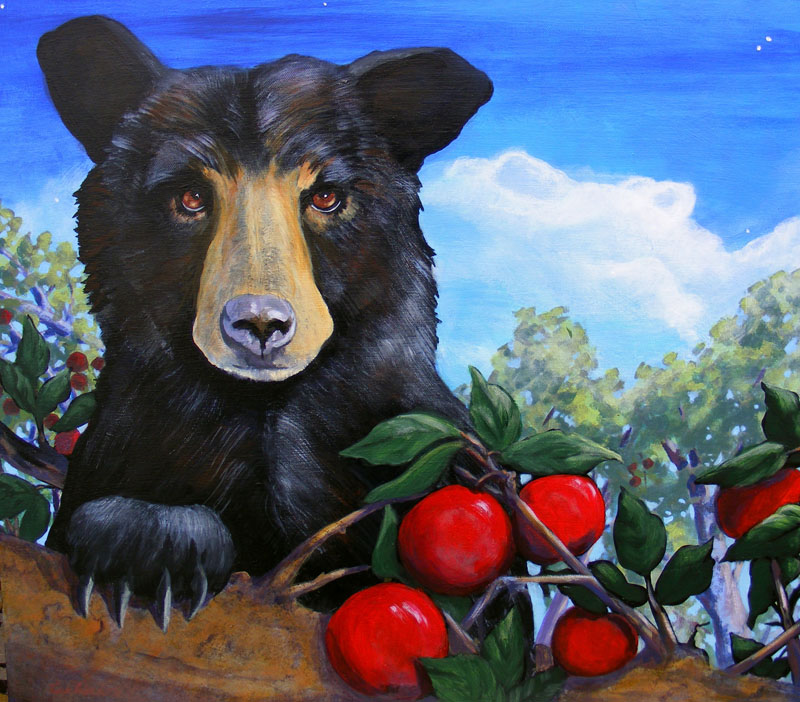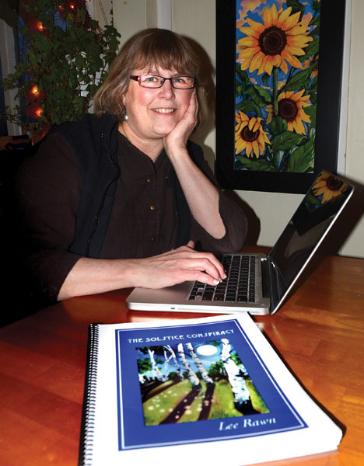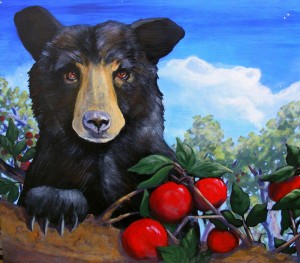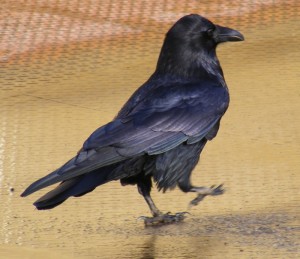Written by a British Columbia resident, Lee Rawn, The Solstice Conspiracy tells the story of Beth and Chris, two children who move to a new home in the country and discover that a nearby garden is inhabited with strange beings. They’re both drawn into this previously unimagined world of tiny creatures where power struggles and malicious intentions present dangers and revelations.
In the interests of full disclosure, I worked with Lee to initially get her book released for the Kindle. That was followed by a Barnes and Noble version and, most recently, a print version through CreateSpace. During the course of about a year, The Solstice Conspiracy underwent transformations almost as dramatic as the garden described in the story. It was edited, converted, re-converted, re-shaped, tested, poked and prodded into an endless variety of shapes to see how it would appear on the screens of the various target e-readers and on the printed page.
Lee is about as far from being a computer geek as it is possible to be in this modern age, where it seems everyone uses three or four computing devices to get through the day. As an accomplished artist—with her paintings and pottery appearing in a number of galleries and exhibitions in Canada—she had been working on her novel for several years, drawing on some of her earliest experiences after first moving to Canada. After making contact with a few agents and receiving encouragement—but no contract—the novel was relegated to storage in a drawer and forgotten about for a while.
In the following interview, conducted in two sessions (the first in March 2011 and the second in January 2012) Lee talks about the origins of her book, the progress on her next book, the mysteries of the creative process, and the support that Canada provides for artists.
The classic (and cliched) question for authors is always: Where did you get the idea for the book?
The idea for the book came because I really enjoy painting and I thought it would be great to illustrate a book. I had just moved from a farm that was way up on the side of a mountain. It was very quiet—it didn’t even have running water (and I lived there for ten years). But circumstances dictated that I leave and I moved to town. I lived in this ratty little apartment, a single mom with a teen-aged daughter. I missed the farm and the silence and walks in the woods.
The desire to illustrate a book grew from a longing to return to the simpler life that I had left. I envisioned watercolor paintings of gardens and forests. My son, Craig, is a writer and poet. I thought perhaps he could write a book and I would supply the illustrations. He said, “Sure.” But, no pages surfaced. I think he forgot about it. So I thought, okay, I’ll write it myself. It can’t be that hard. Actually, it turned out that it was hard.
It launched a 12-year learning experience and little by little I got the gist of writing and really got hooked. I couldn’t wait to sit down, first to the old typewriter and then finally to a computer. I’d type away and edit and type and edit and learn. And, it continued like that.
As you were working on the book, did you have mental pictures in your head as to what all these characters looked like?
Everything I write starts with a mental picture. First, I envision the scene and then I do the writing. I’m a pretty visual person. So, yeah, I did. I had an idea about what everybody looked like right off.
In fact, when I first started writing I was satisfied with what was in my head and therefore the descriptions weren’t going onto the page. It took awhile for me to understand that not everybody would visualize the characters the same way. More description was needed.
You’ve brought these characters alive through writing. How would it be to try to do the same thing using your painting or drawing skills?
Probably drawing skills for starters. The thing is, I can do a face and I can do a figure, but to capture the same face again in another scene would be difficult for me. If the first drawing is successful, it’s like, whoa, it worked out. To repeat that, I think I’d need a super good eraser—and a lot of time.
Just for fun, I did try a drawing in colored pencil of Maeve. She is running down the path in her little temper tantrum through the forest. That was fun to do. I started with a black and white sketch and then did a colored version. The colored version is a bit too dark. I did it on black paper and then used lighter colored pencils to increase the tonal values. Unfortunately, I wasn’t able to get a good range of lights for needed contrast.
I can definitely envision the book illustrated. Perhaps like the classic novels we read as kids. Gulliver’s Travels, for instance, where each chapter had one black and white illustration. There were also a few colored plates here and there.
Do you think this book would be a good candidate for a graphic novel?
I don’t know. I know very little about graphic novels. Diana Gabaldon recently published a graphic novel. She did it from the point of view of Jamie rather than Claire. I haven’t had a chance to look at it yet.
What do you think of interactive story telling where stories might have multiple endings and plot paths?
I am a little bit old fashioned in that sense. I think the story needs a set beginning, middle, and end. I can’t think of how else my story could end (unless the evil wiggins actually succeeded).
You had another story in mind? Have you moved in that direction at all?
I’ve written a couple of chapters. It takes place in the city, and it involves the Peasgood children, rather than Beth, (although Beth and Chris would show up later in the story). It starts out in the living room of the Peasgood house. Lindsey says, “Please, can we keep him?” She has her arms wrapped around a big, fluffy dog—a shepherd-collie cross named Farley with tufts coming out of his ears. Lindsey’s Mom isn’t keen on the idea, but the rest of the family out vote her.
Lindsey takes Farley to a nearby park. After chasing a ball for a while, he goes to relieve himself on a bush. Lifting his leg, he inadvertently pees on a sprite. She storms out throwing off her tunic and shouts at the dog. “Pay attention when you lift that leg. And you should watch what your dog is doing,” she shouts at Lindsey, not expecting an answer. But Lindsey, having already been introduced to the elemental realm, is able to see the sprite. “I’m so sorry.” She said. The sprite is shocked that she can be seen by a human. This is Maj, the sprite introduced in the first book.
Later the three Peasgood kids take the bus down town to buy school supplies. They come across a blues player with his guitar case open and people tossing in quarters. What really stuns them is that there is a bunch of sprites and they are all dancing. It turns out that the sprites show up every Friday to listen and dance on the sidewalk.
So the story begins. The children connect with sprites seeing into their world, and how both worlds co-exist and cross over. Other characters emerge such as the gremmels, forcing the children to remember what their grandmother told them about the elemental realm. “ Dealings with the elementals must always be cautious and respectful. Just like the world we live in, you’ll find good and bad, and all the ranges in between.”
That’s as far as I’ve gotten. I’m not quite sure where the story will go from there. The characters will let me know.
I know there are some writers who actually outline stories in detail and there others, like Stephen King, who freely admits that he doesn’t have a clue where the story is going to go and kind of lives it and it grows around his imagination as he writes. It sounds like you are one of those kind of writers who doesn’t know what is going to happen until you’re actually sitting there writing it and making it happen.
Exactly, And that is how I wrote The Solstice Conspiracy. Hey, what if this happened? That is a neat idea. Then I would take off on it. And sometimes I would have to backtrack because it was ridiculous. I often re- wrote chapters until it was right.
I know you are supposed to have an outline, but I have never been able to get that far.
I think there are probably as many writers who don’t use an outline as do.
I took a workshop with Terry Brooks. He was the fellow who wrote all the Shannara books. According to Terry, a good portion of his writing is actually dreaming. He said, “Not long ago I was sitting on a beach in Hawaii and I got a call on my cell. The caller said, ‘Are you writing?’ He said, ‘Yeah, I am writing.’ And he was, but he was sitting on the beach just dreaming.
Everyone has their way of doing things that work for them.
Canada is pretty well known for giving support to musicians and artists and such. It sound like there is a pretty good support network right in your local area, which isn’t a huge metropolitan region, by any measure.
The big city of Salmon Arm has 17,000, which is maybe bigger than your city.
Our town is 2,000, so you’re living in a giant city in comparison.
Yes, a giant city! The thing about our town that is really neat is they have The Roots of Blues festival. It has been going on for 20 years. We’ve enjoyed Colin James, Joan Armitradin, Blind Boys of Alabama. Taj Mahal, Maria Muldaur and many other artists. I think seventy musicians attended last year. And the festival is huge. The town swells by another 15,000 people. There is a lot of support for musicians here.
Then we have the writer’s festival, Word on the Lake, which is remarkable. Ten or more authors. Publishers, and editors, give workshops for the whole weekend. I have attended all the Writers’ Festivals here and have come away with a wealth of knowledge. I highly recommend a weekend of writing workshops to anyone who writes whether a seasoned author or someone who is just starting out.
And then there are readings, which I am going to do this year. So there is a lot going on here. Salmon Arm is a pretty artistic town. There are many other towns in British Columbia where art is also well supported.
Can you talk a little bit about getting interviewed recently by your local paper? How did they find out about your book?
It comes back to the Writer’s Festival again. I am on the planning committee, so I know ten others that are on the committee. I just mentioned about the book to one person and she let the paper know and then they called me and asked me if they could do a feature, which is really cool.
I thought when I went down there that they would ask a little bit about the book and then about the festival. And, actually, they just wanted to know about the book. That was pretty nice. The article will be coming out next Wednesday. She just wanted to know how the book came about in the first place and a little bit about the characters in the book. I talked a little bit about the nature of the fairies upholding the garden and then when the garden runs down, the elemental realm runs down right along with it.
Did the interview go pretty easily? You must know the subject matter now backwards and forwards by now.
One would think . . .
No, I kind of chopped it up a bit. I revealed more than I should have. I wasn’t planning on that. I did talk about when the characters went to the waterfall, because the waterfall is based on Margaret Falls, which is nearby.
When I first came to the area, back in 1970, there were no trails to the waterfall and you had to climb over logs, climb under logs, climb up the canyon walls, and it took nearly an hour to reach the falls. Climbing above the falls now, there is a path so that people with wheelchairs can go and see the falls and it takes maybe 5 minutes to get there. And you can’t climb behind the falls anymore.
There is incredible moss and lichen and these huge, gigantic cedars that have fallen against the canyon and are leaning. There are natural bridges of cedars and things like that. It is gorgeous there.
What other promotional activities are you working on?
One of the people on the planning committee is a retired schoolteacher who is still on a teaching committee for the B.C. interior. I thought when she gets back I could approach her on how to introduce the book to the teachers.
They are elementary teachers, so that might be a doorway. It makes sense from the standpoint of ecology, because it is timely. It is not about cleaning up the world and all of that just jammed down your throat. There is a story involved and so it is just an underlying theme that might be more palatable for children to look at it from that standpoint and have an enjoyable story at the same time.
That theme is nicely woven through the entire story.
I did mention that during the interview. I was a little distracted because there was a little dog in the interviewer’s office that was jumping up on me—a really cute dog and I kept petting the dog and then losing focus. One of the perils of the interview process . . .
What other writing projects are under way?
I’m working on an autobiography. The act of writing it has been a real eye opener. ‘Oh, that is why that happened’ or ‘Hmm . . . because of that, this is where life took me.’ Maybe it is about me, but I think that others might find it interesting or helpful—maybe helping understand what not to do with your life.
With fiction, your main character needs to grow, needs to change, needs to stand up for themselves, things like that. It is the same for an autobiography, because if it’s just ‘you did this, you did this, then you did this’, what’s the point? Who cares? There has to be growth there. I am just fishing out some of the gems that are the building blocks. It is intriguing for me. Also, I am remembering these wonderful stories. Right now I am writing about raising a duck in Winnipeg in my apartment; it was a beautiful experience.
I think everybody has a story.
But, as you said, it only becomes a story when the growth is there.
I put a disclaimer at the beginning of my autobiography, saying something like: I was exploring my building blocks. Some were nice and straight and solid. And others were quite askew. In the end of this story, you will either want to hang out with me or ride me out of town on a rail. We’ll see . . .
Hopefully, some growth will be discovered here. I’m sure there is some growth.
Can you really just sit down and start writing or do you struggle to get started?
Often, what I’ll do—if I have no inspiration at that moment—is take a chapter that I have already done or almost completed and I will edit it: tighten up the sentences, make it flow a little better and all of a sudden a switch turns on and then more ideas and more ideas come and I am able to just jump right in with both feet. I do that with any kind of writing. If nothing is coming, I start editing and then it just starts again. I don’t know exactly what makes that happen. It is like suddenly opening a tap and all this creative juice starts flowing.
Do you have a similar process that gets you started with a painting?
Yes. Maybe it is something that I see. I’ll just be walking along and all of a sudden there will be this reflection and I’ll think, ‘Oh, that is incredible.’ Often, if it is near my house and I’ll run and grab a camera and hope that the light hasn’t changed, but then it kind of sticks in my brain and percolates for awhile, like this raven that I am planning on painting. He is walking on the deck of the ferry and because of the sunshine, the deck looks golden. So here is this black creature with beautiful blue reflections on his feathers and his shadow and he is walking with one foot raised as if he is doing a little goosestep. It is exquisite. I’m not sure how it is going to evolve, but it has been sitting in my head now for a couple of weeks.
So, under the right conditions sometimes the ideas just start coming by themselves.
Well, yes, it does. And sometimes it just takes a change of scenery, too. I wrote in my blog that I call myself a coffee-shop vampire, because sitting in front of the computer at home I feel that sometimes a need a kickstart, so I’ll go get an espresso. But it’s the energy in the coffee shop, people I know, people I don’t know all milling about, visiting, and there is a certain energy in the air and, I don’t know, my fingers just fly over the keyboard and the stuff that comes out is not bad. Any little trick to get started . . .
The creative process is of interest to everybody—not only artists. One of the first questions from interviewers is always: where did you get the idea for this story? And that is a question that readers or those who appreciate art are curious about. If it is good work, then it evokes this curiosity: where did this come from? It is certainly an apt question.
You can learn more about Lee Rawn, The Solstice Conspiracy, and her artwork at www.leerawn.com.








